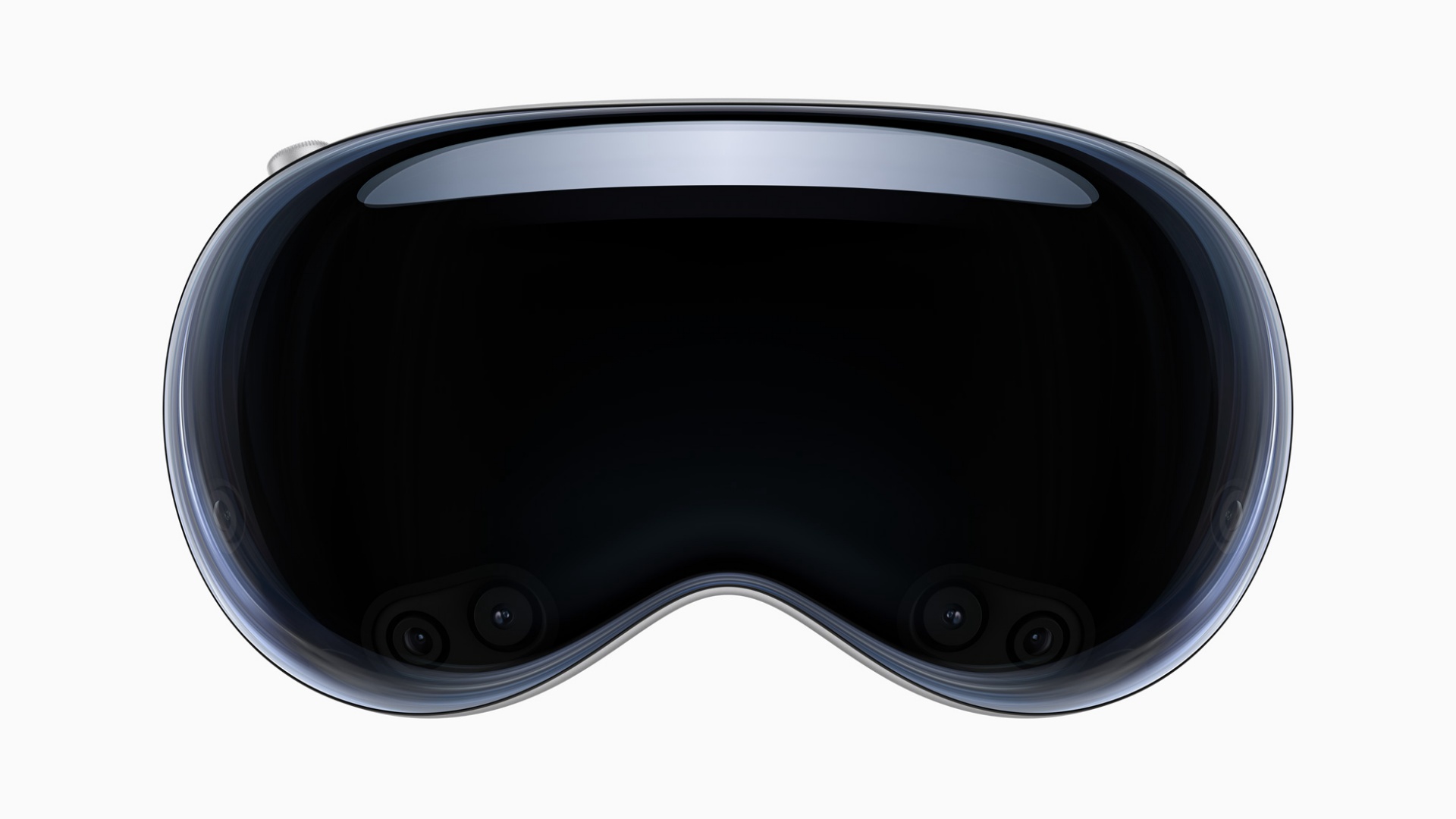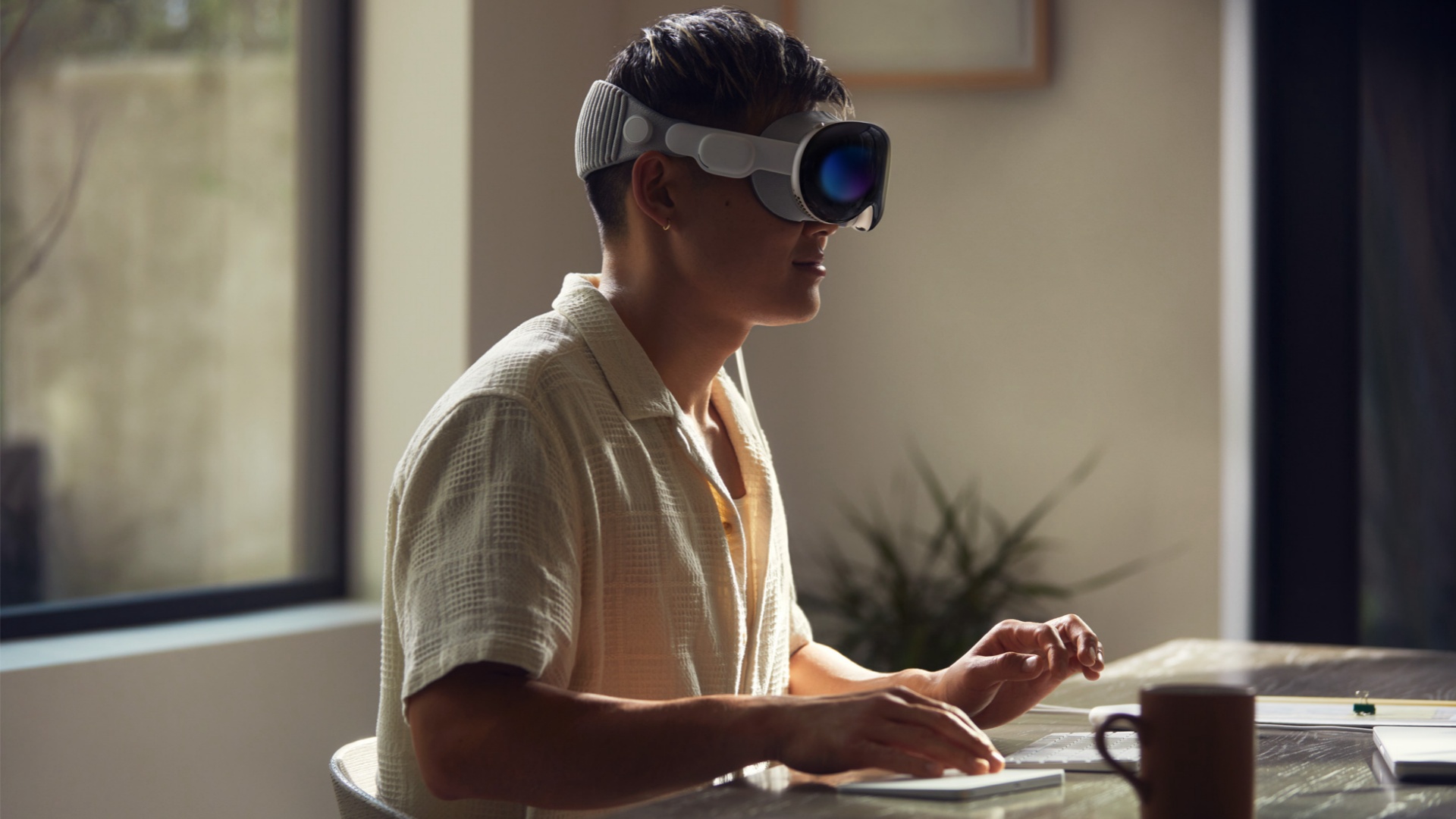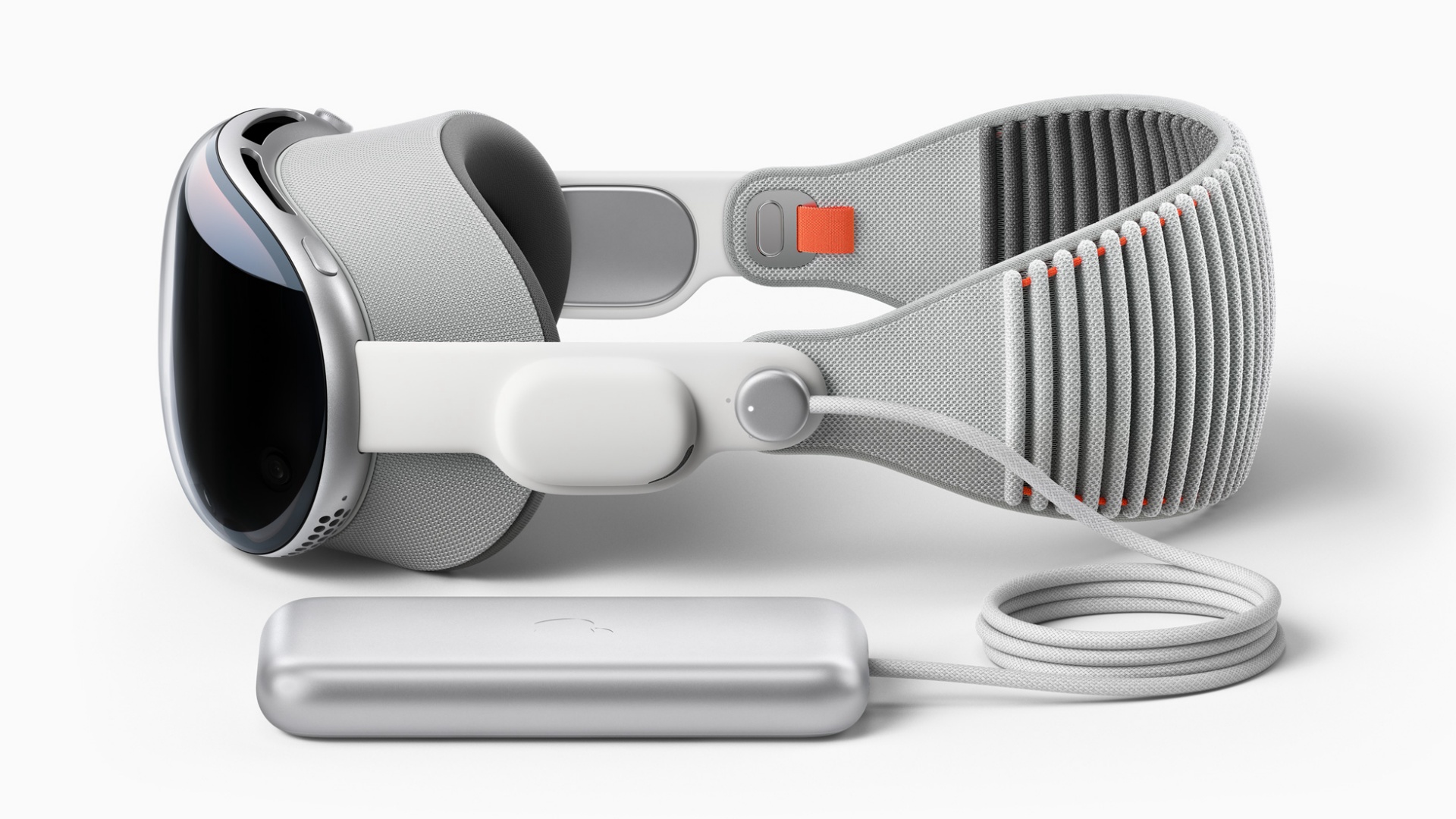- Expected to be revealed at WWDC 23, Apple has officially unveiled its first augmented reality headset – the Apple Vision Pro.
- The new piece of hardware is said to make “spatial computing” a reality, according to the company.
- The Vision Pro features a 4K display, integration with the Apple app ecosystem, and operates sans a controller.
This evening Apple hosted its annual WWDC 23 developer conference, saving the best, or most anticipated for last, revealing its first ever augmented reality headset – the Vision Pro. This is a device that has been rumoured as being development for a number of years now, but now it has officially seen the light of day.
Apple is billing this device as one that enables a spatial computing experience, along with running its new visionOS operating system. This means it integrates and supports many workplace-focused applications, videoconference platforms, collaborative tools, audiovisual experiences, and gaming, according to Apple.

“Apple Vision Pro brings a new dimension to powerful, personal computing by changing the way users interact with their favorite apps, capture and relive memories, enjoy stunning TV shows and movies, and connect with others in FaceTime,” the company added in a blog post.
“Apple Vision Pro enables users to be even more productive, with infinite screen real estate, access to their favorite apps, and all-new ways to multitask. And with support for Magic Keyboard and Magic Trackpad, users can set up the perfect workspace or bring the powerful capabilities of their Mac into Vision Pro wirelessly, creating an enormous, private, and portable 4K display with incredibly crisp text,” it continued.
Running through the various specifications and components of this AR headset, it boasts 12 cameras, five sensors, and six microphones, with all information being processed by a newly developed R1 chip by Apple. The headset is also powered by the M2 chip on the computing side of things, and speaking of power, a high-performance battery connects to the headset, although Apple has not disclosed how much battery life it delivers for now.

Other notable elements include a modular design to assist in getting the right fit for wearers regardless of what their face or head shape is, along with built-in earphones that deliver spatial audio, and an iris-scanning system called OpticID to allow wearers to log into the device securely.
“Featuring a breakthrough ultra-high-resolution display system built on top of an Apple silicon chip, Vision Pro uses micro-OLED technology to pack 23 million pixels into two displays, each the size of a postage stamp, with wide color and high dynamic range,” noted Apple in its blog.
“This technological breakthrough, combined with custom catadioptric lenses that enable incredible sharpness and clarity, delivers jaw-dropping experiences. Users with vision correction needs will use ZEISS Optical Inserts to ensure visual fidelity and eye tracking accuracy,” it added.

Now for the recommended pricing, and it’s quite a doozy, with the Vision Pro listed from $3 499 (~R67 448). Availability will only be confirmed at the beginning of 2024, so if you are indeed interested in this augmented reality headset, best to start saving now.
Meta, which revealed its Quest 3 mixed reality headset last week, starts at a far more “affordable” $499 (~R9 618).
As such, even if the Apple Vision Pro AR headset is the most advanced device of its kind to date, it’s price tag will likely mean very few will ever get to experience what it is capable of.

